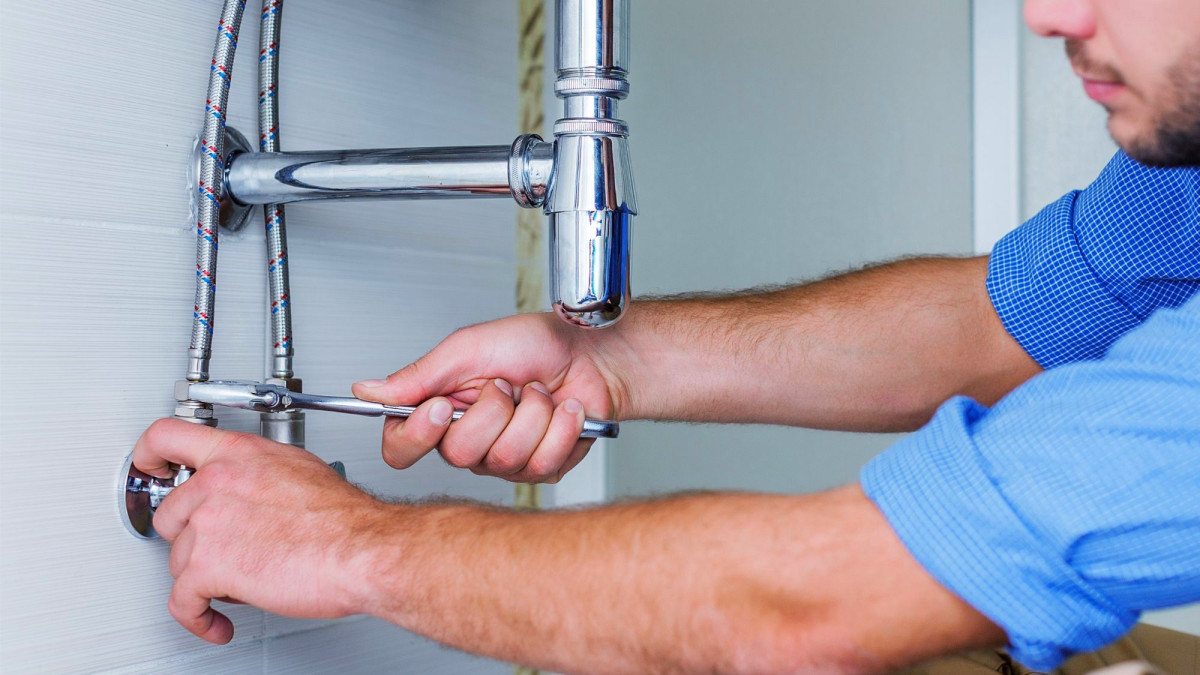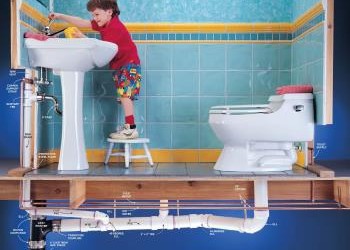Beginner's Guide to Effective Bathroom Plumbing Maintenance
Beginner's Guide to Effective Bathroom Plumbing Maintenance
Blog Article
They are making a few great pointers on the subject of Essential DIY Bathroom Plumbing Tips Every Homeowner in general in this content which follows.

For new property owners, understanding and maintaining washroom plumbing can save both time and money by preventing expensive problems down the line. Here are some important restroom plumbing ideas to help you keep everything running efficiently.
Prepare for Winter
Secure your pipelines from freezing throughout cold weather by insulating pipes in unheated locations like cellars, attic rooms, and garages. Throughout extreme cold, let cold water drip from faucets served by revealed pipelines to aid stop freezing.
Schedule Normal Upkeep
Take into consideration scheduling annual inspections with a certified plumbing. They can identify problems that you may miss out on, such as covert leaks or wear and tear on pipes and components. Routine upkeep aids prolong the life of your pipes system and can stop emergency situations.
Familiarize Yourself with the Main Shut-Off Shutoff
Understanding where the major water shut-off valve is located in your home is essential. This allows you to promptly turn off the supply of water in case of major leaks or throughout pipes emergency situations, stopping considerable water damage.
Regularly Evaluate for Leakages
Little leaks can cause large issues. Regularly check under sinks, around commodes, and near plumbing fixtures for any type of indicators of leakages. Search for moisture, small drips, or corrosion. Capturing and repairing leakages early can prevent more serious damages and save water.
Keep Your Water Heater
Guarantee your hot water heater is readied to an ideal temperature (usually about 120 degrees Fahrenheit) to stop scalding and minimize power use. Flush the container yearly to remove sediment buildup, which can reduce the efficiency and lifespan of your heater.
Upgrade Your Components
If your home has older fixtures, take into consideration upgrading to extra effective models. Modern commodes, showerheads, and faucets are created to use much less water while offering excellent stress, which can dramatically reduce your water expense and ecological footprint.
Beware with DIY Pipes Repair Works
While it's alluring to take care of all home fixings on your own, be cautious with plumbing. Some problems may need specialist know-how, especially if they entail primary water lines or sewage system repairs. Working with a specialist can sometimes be more economical than DIY, specifically if it avoids more damage.
Do Not Neglect Slow Drains
If your sink or bathtub is draining pipes gradually, it's usually an indicator of a blockage forming. Resolving this early can protect against a total clog. Use a plunger or a plumbing technician's snake to clear out particles. Avoid making use of chemical drain cleansers as they can harm your pipelines with time.
Know What Not to Flush
Commodes are not waste disposal unit. Prevent purging anything other than bathroom tissue and human waste. Things like wipes, womanly hygiene items, and cotton swabs should be thrown away in the trash to avoid obstructions and sewer back-ups.
Install Strainers in Drains
Area filters in your sink and bathtub drains pipes to catch hair and various other debris prior to they enter your pipes system. Cleaning the strainers routinely will aid avoid buildup and keep water moving easily.
Conclusion
Recognizing and maintaining your home's shower room pipes can avoid numerous usual problems. By adhering to these important pointers, you can ensure your bathroom continues to be functional and effective, conserving you time and money in the future.
5 Plumbing Tips for First-Time Homeowners
Know How to Shut Off the Water
In most homes, the water can be shut off at two places: at the appliance or fixture itself, and for the whole house. For instance, look under your sink or behind the toilet. See those little knobs that connect with the pipes? Those are the shut off valves for those fixtures. Simply turn them until the water is off. The main shut off valve (which controls water throughout your entire home) will be outside, where the water feeds into the structure. You might need a dedicated tool, such as a water shut-off key, to shut off the water at the main.
Build an Emergency Plumbing Kit
Everyone knows how important it is to have a high-quality plunger around the house. But there are other things that can help you out when issues arise with the pipes. Building an emergency plumbing kit to solve issues on your own is part of any list of basic plumbing tips. Consider adding these things to create a basic plumbing kit:
Adjustable wrench Tongue-and-groove pliers Screwdrivers Plumber’s tape Pipe sealant Duct tape Set of hex keys Clip light for working under cabinets Auger and hand snake Do a Little Research
Many small leaks can be handled by replacing a small part of the piping system, tightening part of a faucet, or even changing out an aerator. Take the time to browse how-to articles for common plumbing problems, such as a running toilet or slow-draining sink. You might be surprised to find how easy it can be to do simple things yourself, like replace a valve in the back of the toilet.
Keep it Simple With No Chemicals
If you have a clog, you might be tempted by the promises of liquid drain cleaner. While this might work at first, it actually causes more damage deep in the pipes, eventually creating even more problems down the road.
Instead, try using baking soda and vinegar to create a strong fizzing effect that can help break up clogs and clear gunk from drains. Follow it with boiling water to clean the pipes even more thoroughly.
Take Care of Your Garbage Disposal
Be cautious about what you put down the disposal. Avoid pouring in fats, oils, and grease, as these are a surefire way to get a clog. Beware of certain foods too, such as celery or bones, as they can lodge in the works. Always run the disposal with water flowing.
https://modernize.com/homeowner-resources/other/10-plumbing-tips-for-first-time-homeowners

Click On This Link Report this page